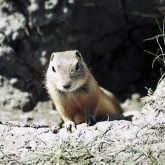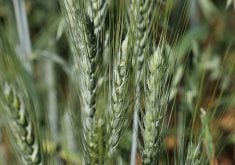It’s back to the future for North America’s largest and oldest precision agriculture conference.
Infoag has drawn leading edge farmers and precision agriculture companies to Springfield, Illinois, for nearly 20 years.
Despite being successful, the event hasn’t drawn as many producers as it did in its first season.
However, that’s about to change.
“We have over 800 registered to attend this year,” said conference organizer Quentin Rund.
“We are thinking it’s bigger than the first one, and the trade show sold out. We expanded it and it sold out again.”
Read Also

Gene editing digs deeper space in Canadian plant breeding
More Canadian research into crop variety development is incorporating gene editing, and one researcher notes that Canada’s regulatory approach to gene editing will help drive innovation
The industry wasn’t even sure what to call precision agriculture in 1995, the year of the first Infoag. Now it’s not sure it still needs a name, considering it has become such an everyday part of farming.
Farmers were given the opportunity to identify ground locations from global positioning satellites only two years before the first conference. Before that, aerial photos were used to overlay topographical maps and soil sample data. It wasn’t popular and had limited applications outside of research. It’s a now part of everyday life in the field.
“Farmers are more cost conscious than ever,” said agronomist and consultant Harold Reetz, an industry pioneer and founding organizer.
“Variable rates deliver the right amounts of fertilizer, pesticide and seed. The new machinery has the tools to make use of the technology, so farmers want to learn how to use it best.”
Producers get the chance to hear about and experience the latest in farm technology during four days of tours, workshops and speakers.
Agronomy and cost controls, along with improved land and soil analysis, are creating the renewed interest in the event, Rund said.
Infoag typically attracts Canadian producers and companies.
“It’s a worldwide trend, but very big in North America,” he said.
The conference runs every second year, alternating with the International Conference on Precision Agriculture, but organizers are considering making it an annual event.














